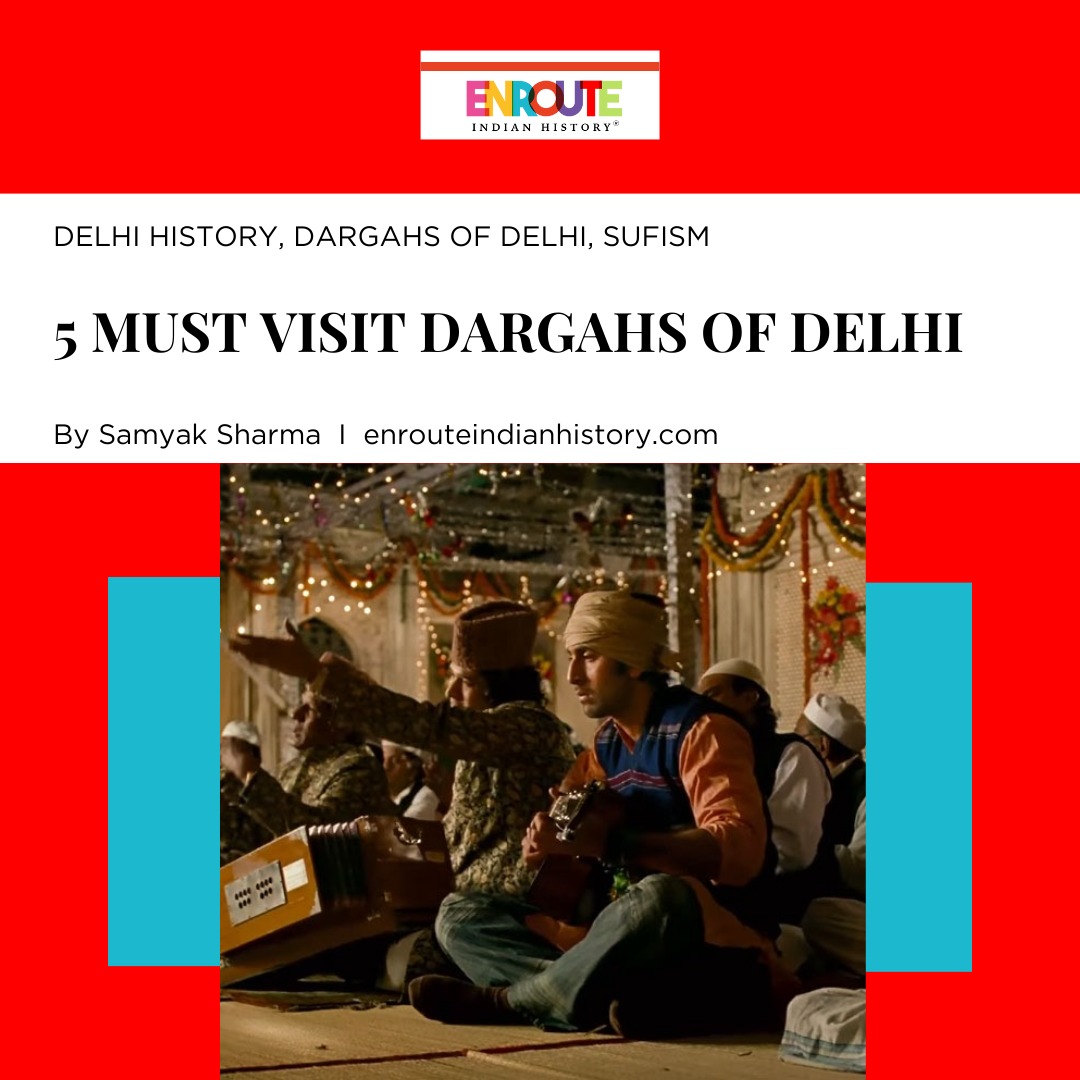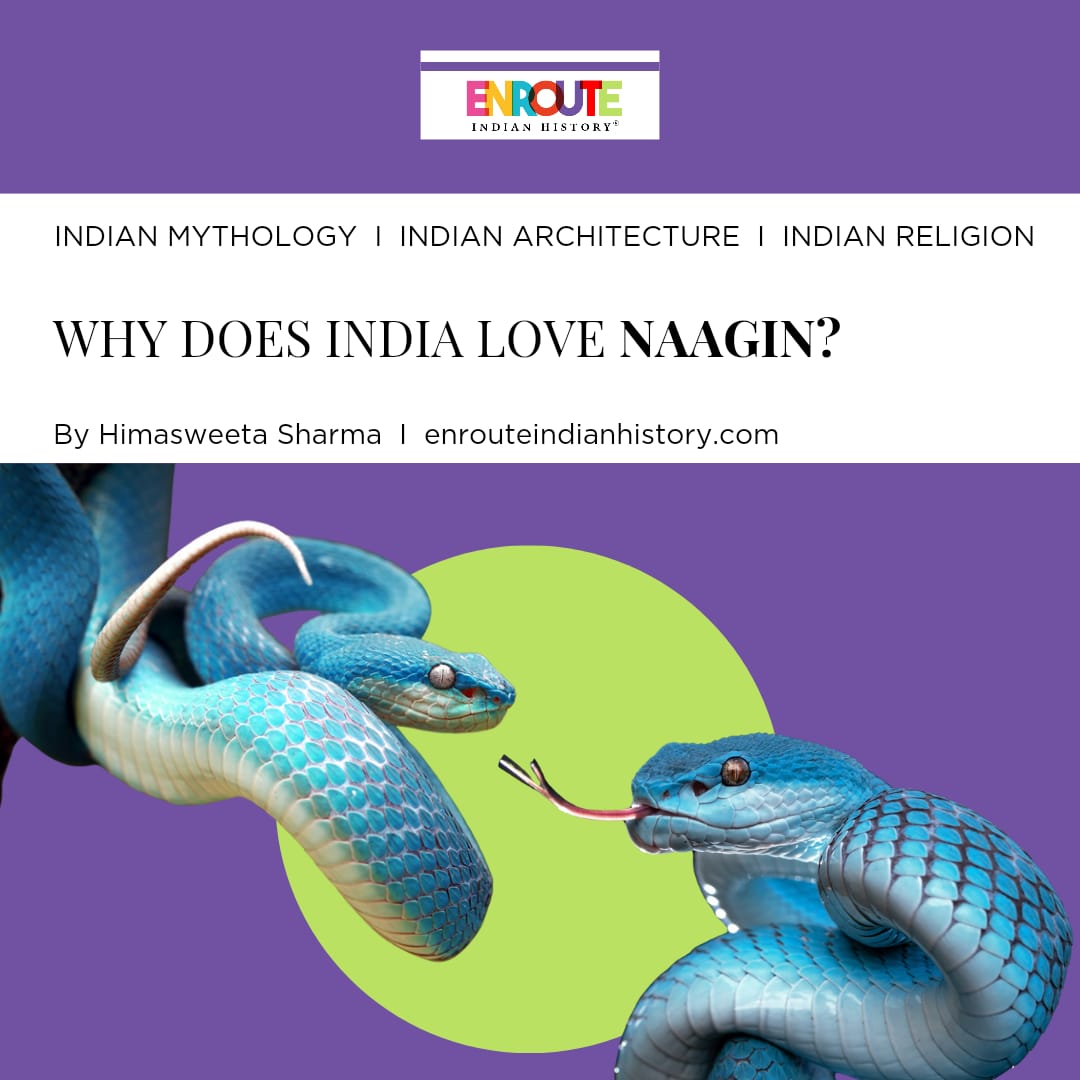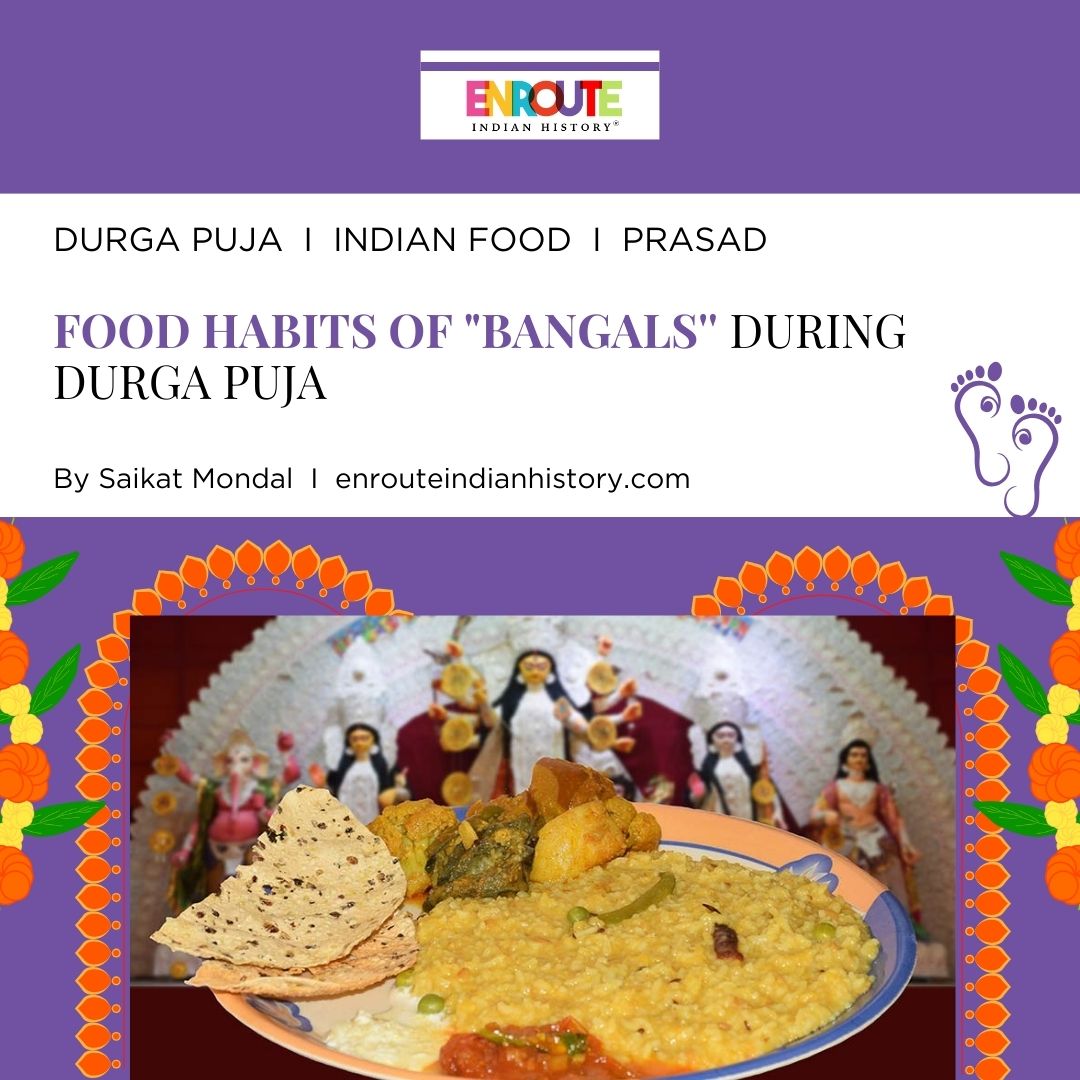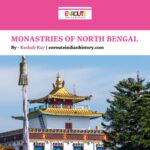How Demon King Mahishasura is worshipped in the Santhal Community ?
- enrouteI
- October 29, 2023
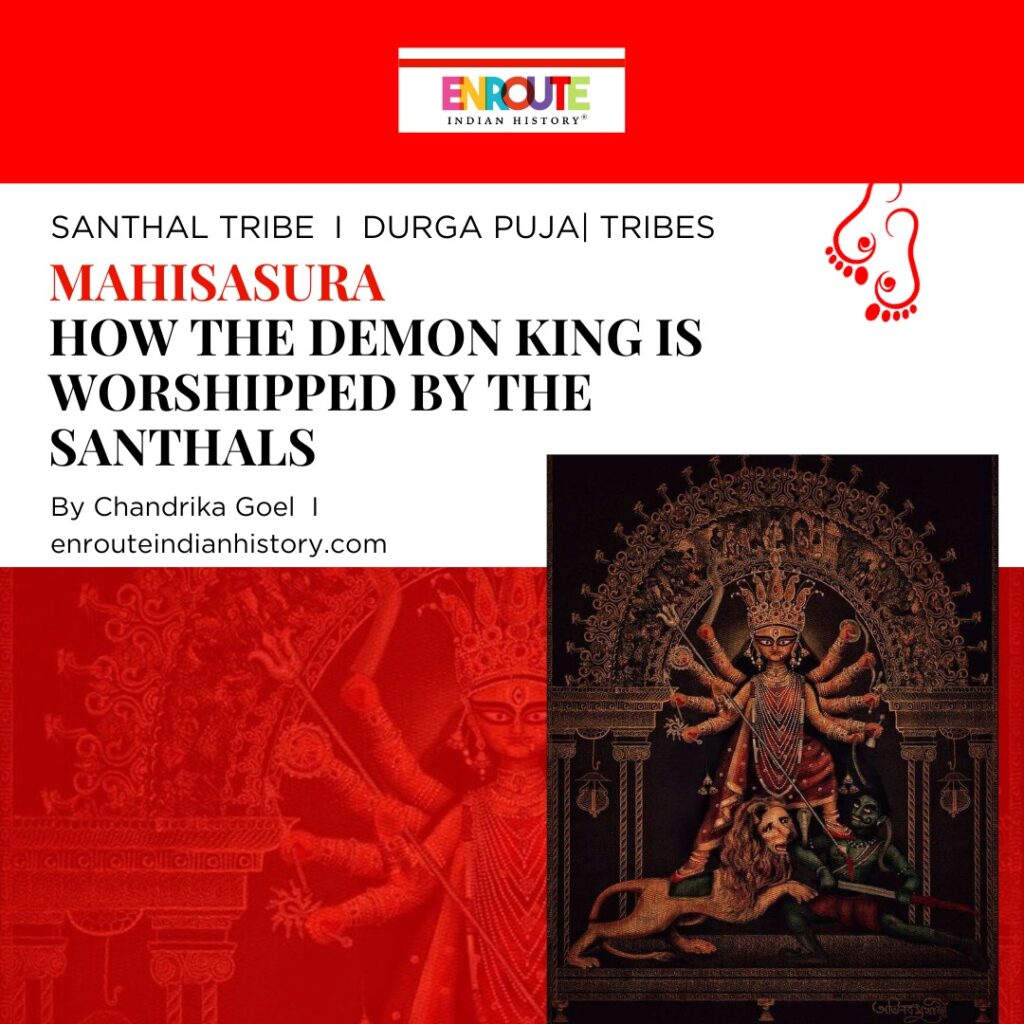
Durga Puja is the major festival of Hinduism celebrated throughout the Indian Subcontinent for a period of ten days. This festival is celebrated in the month of Ashvina (September- October). The festival is particularly celebrated in Bengal, Assam, and other Eastern States including the Western States like Gujarat. Durga puja or Durgostava celebrates the victory of Goddess Durga over the evil demon King, Mahishasura.
The whole Bengali community engages itself in the festivities from day one or Mahalaya. Mahalaya marks the advent of Goddess Durga when she officially begins her journey from Mount Kailash — where she resides with her husband Lord Shiva — to her maternal home on Earth. On this day, people practice rituals and pay ode to their ancestors. However, Hindus observe Mahalaya as the ending of Pitru Paksha, also known as Shradh or Shraddh, and the beginning of Devi Paksha. Pitru Paksha is a 15-day period when Hindus pay homage to their ancestors. Pujo formally starts from the sixth day Or Sasthi where the Goddess is worshipped in her various forms. Finally, on the tenth and last day, Vijayadashmi, the sacred images and sculptures of the goddess are immersed in local rivers. This ritual marks the return of Goddess to her spouse, Shiva, who resides in the Himalayas.
But every coin has two sides to it and so does the festival of Durga Puja. There are two faces of this puja that mainstream media fails to bring forward before us. Many small communities and tribes within Bengal, practice Pujo in different ways and have their own ancient traditions. For example, the Kherwal Santhals of the Falaora village of Purulia district of Bengal, mourn throughout the duration of Durga Puja. While Durga Puja is a joyful event for others, it is a sad festival for Santhals. On this day, one of their gallant warriors was murdered; they also lost their chief, their outstanding commander. Instead of making delicious meals and sweets or buying new outfits, they send their lost leader a gift of sympathy and pain. The lost leader is no one else but Hudur-Durga whom we call Mahishasura, the demon king. Apparently, not a significant number of people are aware of the festival which is known as Dasai by the Santhals.
Mahisasura : The Martyred King
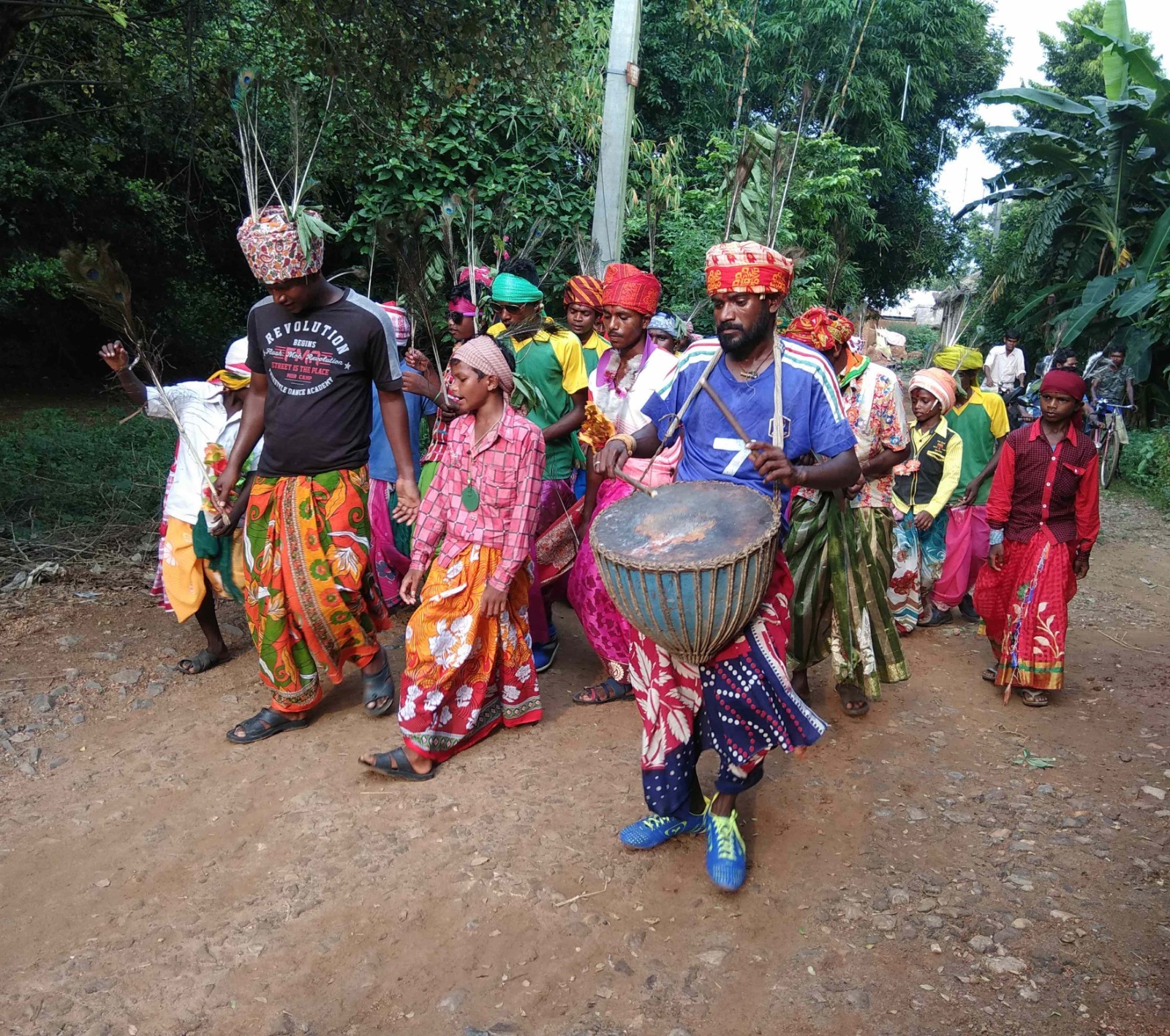
Traditional dance of the Santhali community from Baliguma village, Purulia district. Picture and text source : Youth ki Awaz
The Kherwals believe that prior to the formation of the Santhal community, Santhals descended from Kherwals, who had a ruler who oversaw a region known as Chaichampa. Chaichampa was a prosperous, joyous place where people were satisfied and coexisted harmoniously. In the midst of it, some Intruders (perhaps Aryans) attacked the country of Kherwals, but they were defeated by their courageous, strong king, who then began hatching plots against him. The Kherwal forebears never attacked women, but the Aryans were aware of this frailty and purposely wed the Kherwal king to one of their women (an Aryan woman). The only option the Kherwals had after their chief’s wife tricked him into killing himself, was to flee their own country.
Men fled from the area while posing as women in order to escape the enemies. They commemorate it as Hudur-Durga’s martyr day ever since. Before Hudur-Durga passed away, Dasai was a happy event that later turned into a festival of sorrow and loss. The songs are identical, but the word “Hay-Hay” has been added to them. However, the tradition of Asur puja or Mahishasura puja has spilled over to several other tribal villages in Bengal that now observe ‘Hudur Durga’. Tribal and Dalit communities such as Bagdi, Santhalis, Mundas, and even Namasudras take part in observing the martyrdom of Mahishasura. According to the subaltern version of the mythology, Mahishasura, the buffalo-tribal king, was deceived and stabbed by Durga because of a boon that no man could defeat him. Subsequently, a group of gods arrived and killed him.
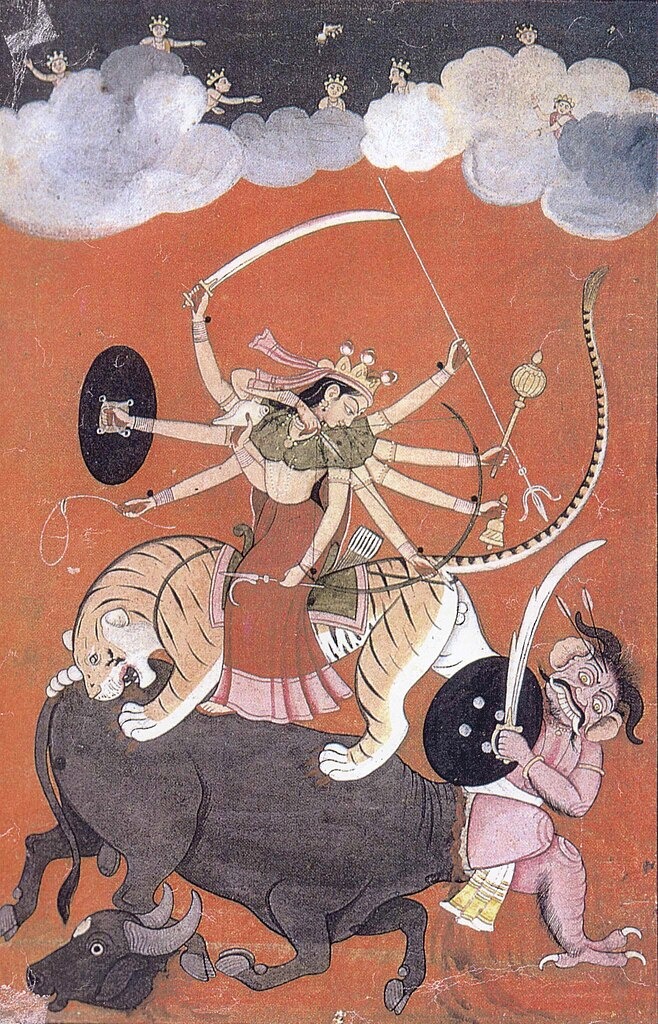
Goddess Durga, fighting Mahishasura, the buffalo-demon
In the clouds the Devas, celestial beings watching the event, are seen. The story is written in the Devi Mahatmya and Devi Bhagavata and is the background of the Durgapuja, the annual Hindu festival in autumn.
Early 18th century, Guler School
Source : Wikipedia Commons
According to an interview with a member of the Kherwal community, “Hudur Durga is not among our gods whom we worship all through the year. He was a martyred king. We spent five days remembering him. We call him ‘hNorh’ (হোঁড়). HNorh means human—an ancient human. His land is like an aspired heaven to us.”
This shows the amount of respect and belief this community has in Hudur-Durga. The Kherwals feel belittled when they see their leader beneath Goddess Durga’s feet. They believe that their leader lost indeed but placing him down there (feet) is a stereotype that is not acceptable.
DURGA PUJA : MARKER OF RESISTANCE AGAINST THE BRITISH
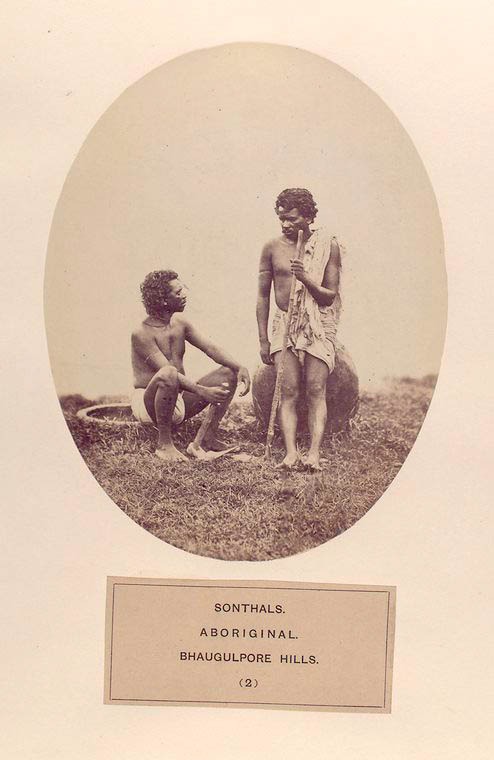
This image is from the book, The People of India, a series of photographic illustrations, with descriptive letterpress, of the races and tribes of Hindustan, originally prepared under the authority of the government of India, and reproduced. by J. Forbes Watson and John William Kaye between 1868 – 1875. Source:Wikimedia Commons
There is another group of Santhals with a similar story, however, it caters more to the colonial aspect. The Santhals of the Sulunga village in the Birbhum district of West Bengal are known for following a hundred years old tradition. The village celebrates Durga Puja annually to indicate religious sentiments as well as in order to mark the tribe’s resistance against the British.
The nature of the celebration is unique and devoid of traditional rituals; instead, a simple goat sacrifice, an essential component of tribal culture, is performed. The main significance of the event is the Santhal revolt, in which two village leaders, Brojo Murmu and Durga Murmu, took part. The sacrifice stands for the end of British colonial control in India and of the repressive British policies that deprived indigenous tribes of their customary rights, including access to forest land and the ability to practice shifting farming, among other things. The puja was started by the leaders Brojo Murmu and Durga Murmu in an effort to rally people and tribes in the neighboring areas in their fight against the British and draw inspiration from the goddess, who is thought to be a demon slayer by legend. Another claim about Brojo Murmu is that he rebelled against the authoritarian Zamindar who sent tax evaders to Assam to work as coolies.
BIBLIOGRAPHY
- http://www.aainanagar.com/2017/05/20/hudur-durga/
- https://www.google.com/amp/s/www.youthkiawaaz.com/2017/12/from-durga-to-hudur-durga-the-other-side-of-the-story/amp/
- https://indianculture.gov.in/digital-district-repository/district-repository/tribal-durga-puja-mark-uprising-against-british
- https://www.newindianexpress.com/nation/2019/oct/08/not-durga-puja-its-mahishasuras-martyrdom-that-these-tribals-observe-2044705.html
- https://indiafellow.org/blog/all-posts/from-durga-to-hudur-durga/
- March 13, 2024
- 11 Min Read
- October 29, 2023
- 9 Min Read
- October 27, 2023
- 9 Min Read
- October 20, 2023
- 6 Min Read



